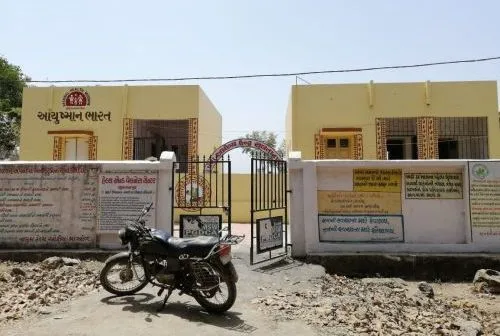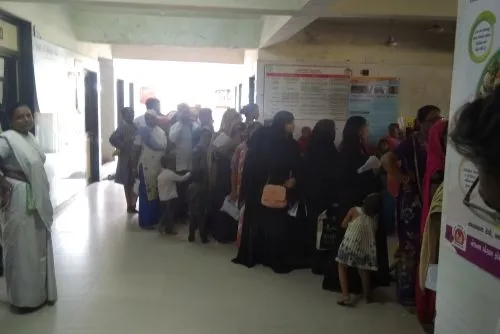Why wait for the next pandemic? We can learn from the systems approach!
Blog post by Sandul Yasobant*)
The approach to the current pandemic to date has been to control COVID-19 and wait for the next event to happen. Even though each time we have a more intense pandemic as compared to the previous one; our efforts will be appraised against the loss of lives. The question is: how long are we going to follow the same approach? Is there any other way beyond waiting for the next outbreak, but to solve the root problems?
Does the health system stand alone?
Right now is the time to tackle the COVID-19 pandemic with the existing resources. We are applying linear problem-solving approaches within the health system such as treating the cases, preventing the transmissions and expanding diagnostic capacities. However, during the post-pandemic era, it is important to tackle the underlying problems from a more integrated perspective, rather than addressing health challenges in isolation. There is, for example, a common concern about the ‘capacity of health system’ to mitigate the effects of the COVID19 pandemic . So higher health-system capacity and functionality are directly attributed to those countries that are having lower mortality rates during the current COVID19 pandemic. The key question therefore seems to be how resilient a health system is in light of the crisis. Obviously there is not a single answer or factor contributing to it, and system science offers an approach to consider the phenomenon from differents angles.

The interconnectedness of the health system
Everything in the world is connected to something else. If our lense allows a paradigm shift from a linear, reductionist approach to more dynamic and holistic approaches that comprise multifaceted and interconnected relationships, we can envisage how the components of the health system are interconnected with each other as well as with elements outside the health system. Addressing this interconnectedness during the crisis might be difficult to achieve. But it is essential to adopt a system-science approach in the post-pandemic period in order to evaluate the responses and develop strategies to enhance health-system resilience. ‘Systems thinking’ provides frameworks and toolkits to assess many different possible solutions under consideration of their non-linear interactions and feedback mechanisms. It helps to understand the interconnectedness of the elements (i.e. synthesis), the non-linear relationships (i.e. feedback loops), visualize the problem holistically (i.e. system mapping) and provides unique insights and discoveries to develop interventions, strategies, or policies that can dramatically enhance the system towards a higher level of resilience.
Examples of how health system is interconnected
We take the Indian health system as an example to understand how a health system is not independent but interconnected with other systems. Indian’s health system has five major challenges (5A’s) i.e. awareness, access, absence of skilled human resources, affordability and accountability. Understanding the interconnectedness of these issues is essential to develop effective solutions. Low disease awareness is not only connected with the lack of health communications but also with the education system. Similarly, physical access to healthcare is not only connected with the number of healthcare facilities but also influenced by the public transportation. These challenges cannot be overcome by the health system alone.
Another example to understand the non-linear relationships within the health system: We have seen how health care infrastructure for emergency cases has been set up overnight to tackle COVID19 infections. This linear solution is, of course, essential during the crisis. However, there are other elements required to make this intervention work: e.g. skilled human resources, training in emergency and critical care, adequate leadership and public health management qualities. These interconnections can be considered as feedback loops, generating non-linear relations. If they do not function well they can also result in unintended outcomes.
These two examples indicate the complexity of the health system itself and its connectedness to other systems. It is therefore necessary to understand the interconnections and feedback loops between the different system elements so we can identify the underlying factors responsible for emerging challenges and develop effective solutions.

Where do we need to invest?
Particularly, we need to invest more in understanding and solving the underlying causes of disease emergence, i.e. addressing primordial prevention strategies rather than solving the issues once the disease has emerged. Consider addressing COVID19 as an example how we will probably handle pandemics in the near future. The classical approach is to develop a robust surveillance system at the human-animal interface prior to disease emergence or by vaccination afterwards.
However, a systems approach to pandemic prevention goes beyond this interface and includes an understanding of environmental drivers, as well as the socio-ecological context of disease emergence. This entails addressing essential issues of other integrated systems such as the education system, transport system, food system and many more to tackle the underlying causes of pandemics. The health system is also highly interconnected to other systems such as animal health systems, public services, and the environment. All of these sub-systems are highly interconnected and we should aim to understand the different facets of phenomena with the help of system mapping, rather than acting separately and seeking sectoral solutions. These integrated systems should be understood with a comprehensive systems approach to develop effective and sustainable solutions. Undoubtedly, in integrated systems, sub-systems (e.g. the health system) may have a set of unique purpose and goals. In overall terms, however, they need to align themselves comprehensively with the main purpose, goals, and values of the whole system (e.g. society) to its overall function.
The key lesson
A wait-and-respond approach to pandemics is not sufficient and results in unnecessarily high economic and social costs as well as human loss. The development of integrated and resilient health systems through the system-science approach can contribute to preventing novel pandemics before they have emerged. It can enable the system to come up with better response capacities in case of a disease outbreak. Therefore, holistic, system-oriented approaches should be considered imperative on humanity’s path to a more sustainable and resilient society.
*) The author is a junior researcher at the Center for Development Research (ZEF) and a PhD scholar at the Faculty of Medicine, University of Bonn, Germany.
Contact: yasobant@uni-bonn.de



